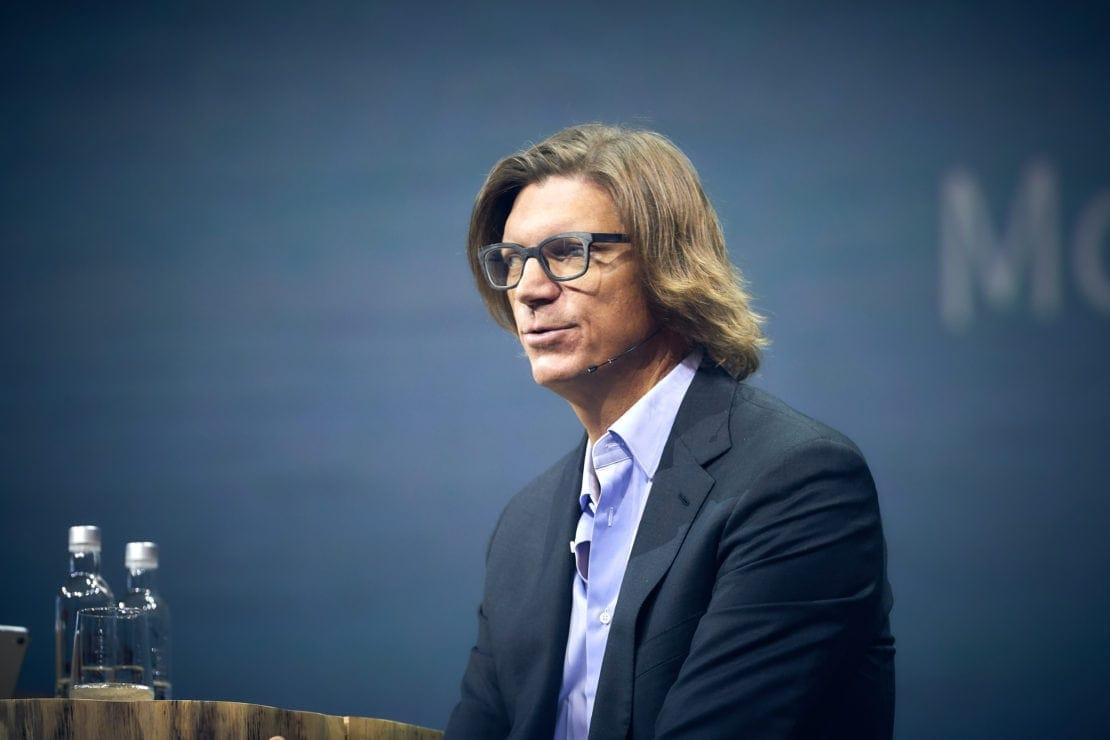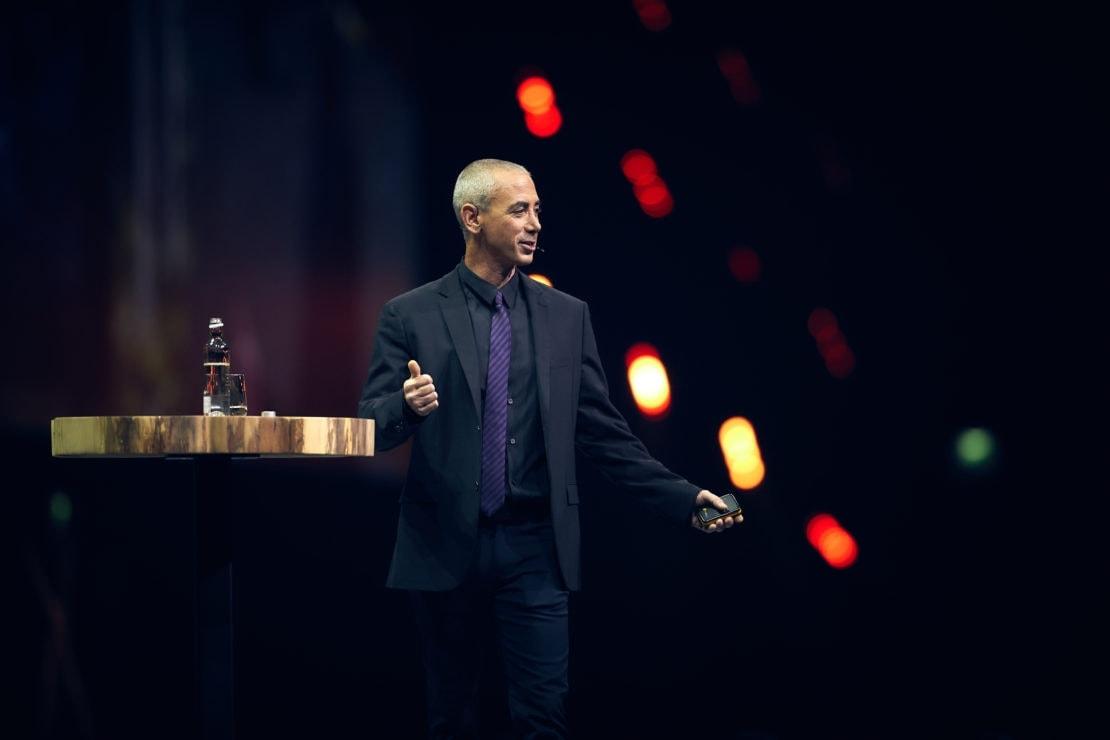20Nov2018
Sheila Heen, a negotiation theory expert and Harvard Law school lecturer, believes that no leader or team of leaders can really do the things worth doing without being able to have difficult conversations. “These are the conversations that help define your leadership,” she explained to her audience at the Nordic Business Forum 2018. “The conversations where we get aligned – or not – on strategy, are where we line up and stay on top of execution. And then as things happen that we did not expect, we have the conversations we need to have to adjust.”
A company with a culture that doesn’t encourage and support those kinds of conversations, it seems, will run up against some serious problems. To illustrate that point, Heen recounted a story of a call she got from the CEO of a growing company. He had reached out to Heen asking her to fix his leadership team. The company was growing, but there were all sorts of problems. The senior leadership team, as he saw it, could not stand each other. This had manifested in a culture where each team member, rather than having conversations with each other, would come and complain to him.
After conducting her normal interviews to kick off the process, Heen found that, as with most companies with dysfunctional leadership teams, the problems boiled down to a particularly strained bilateral relationship. Two leaders simply didn’t work well together at all, and everyone else on the team was either trying to work around them, or lining up with one of them, against others.
Heen introduced these men as Sam and Pete. Sam was direct, type A, and had no filter. During his initial call with Heen, he told her that the summit she had arranged for the team would be a waste of time because nobody would change and because Pete would never learn to deal effectively with conflict. Pete echoed this sentiment by telling Heen on his call with her that he hoped he’d “have his heart attack in the first hour” of their workshop.
During the first week of Heen’s work with the company, a problem arose that Sam needed Pete to address. Sam called Pete, who didn’t answer the phone. Sam immediately emailed Pete. When Pete looked at the email but didn’t reply, Sam called Pete’s second in command, who then texted Pete to tell him that Sam was looking for him. When Pete still didn’t reply to Sam, Sam went to the CEO. The elapsed time for all of this activity was 14 minutes. A similar process repeated itself about once a week.
The pitfalls of blame
The tale of Sam and Pete, Heen said, teaches us two important things. First, “when you have a conflict on your team, you will be more sympathetic to one side or the other, simply based on what drives you crazy. It does not mean that they’re not both contributing to the problem.” Second, this kind of dynamic has a ripple effect throughout an organization. This company, Heen explained, “had settled into what I would describe as a culture of blame and indecision.”
The costs of a blaming culture are real, and they primarily have to do with the way that blame raises the risk associated with decisions in a company. Heen set out eight costs of this culture in particular:
- It makes collaboration extremely hard because people are more concerned with their own reputations
- It makes innovation hard because people are unwilling to do more than cover their own behinds
- It ruins the morale at a company because most feedback is negative
- It reduces trust since everyone is watching their back
- Over time, it drives away top talent from the company
- The Information flow is affected negatively
- Problem-solving is impeded, since people avoid blame, rather than owning up to mistakes
- People are reluctant to make and own decisions
All of this culminates in a company that cannot do what companies need to do, especially in the current climate: be nimble. “In terms of adaptability and agility,” Heen warned, “a blaming culture is a disaster.”
So what is the solution? Heen warned that it can be tempting to simply stop blaming. But such a quick and easy fix is ill-advised for a few reasons: “Human beings are wired for blame. When something goes wrong, we want to know why. We need to know why, if we’re going to fix the problem.” Secondly, and perhaps more critically, if we lose blame, we also lose something very important: accountability.
So we find ourselves in this odd space where we need to avoid the pitfalls of a blaming culture while simultaneously upholding the benefits of accountability. The solution, Heen said, is to “take that natural energy and channel it” towards something she calls ‘joint accountability’.
What is joint accountability, and how is it different from blame?
Blame, Heen pointed out, has two sides: an assumption and a purpose.
The backward-looking assumption asks who is at fault. The forward-looking purpose is to punish, whether formally or informally. So Heen suggested that if we’re going to make a meaningful change to the mechanism of blame, we have to replace both of these sides with something different.
The major mechanism of joint accountability is that each person had some role – however small – in how things ended up. This is the forward-looking purpose of joint accountability, which is not to punish, but rather to figure out what must be done differently in order to avoid the undesirable outcomes. It sounds like a subtle change, but it can make all the difference.
As with any paradigm shift, implementation can be tricky. With joint accountability, the name of the game is understanding who had what contribution to the outcome, and that is not as easy as it sounds. Heen explains that there are 2 types of people when it comes to accountability.
“Some of you are blame absorbers,” Heen explained. “When something goes wrong, the first place you point a finger is at yourself. ‘I should have seen this coming. I knew I should have done this differently.”
The big issue for blame absorbers is that they tend to get so caught up in assessing their own mistakes that they let others off the hook. So being able to point out the role of others in what went wrong is a challenge for blame absorbers.
“Others of you are what we call blame shifters,” said Heen. “When something goes wrong, the first thing you see is what everybody else screwed up. And you don’t see your own role in it.”
The problem with being a shifter is that “life happens at you. You are at the mercy of, or you are the victim of everyone else’s incompetence and circumstance. You don’t see the power you have to change that by changing something you do differently.”
The tragedy, or perhaps the comedy, is that in organizations and in life, these two types tend to find each other, and often forge bad relationships. They become working adversaries within a company, or in the non-professional setting, they marry each other. Which seems to work, Heen wryly explained, because “we both agree it’s your fault!”
And these relationships are stable for a while. But eventually, the absorber reaches the limit of what they can change by themselves. They get burned out, or simply can’t make things right again.
Reaching accountability
The challenge, of course, is getting shifters to see what role they played in problems, and absorbers to see what role others played. Heen suggested a few common, but hard-to-see contributions that can kick-start your working on your own accountability: Avoiding a problem or conversations for too long; being unapproachable; using a communication channel that doesn’t get through; dominating the conversation. Heen emphasized the first two because they seem to be the most common.
Avoidance is especially insidious because, as Heen pointed out, it can seem perfectly reasonable at the time you do it. But in hindsight, it often clearly contributes to problematic situations. Being unapproachable is common, and also damaging – both to companies and to leaders. If you are a leader and your team cannot approach you about the things you need to work on, it can stifle the growth of both you and your company.
In most cases where a leader is unapproachable, a kind of negative feedback loop is created. Heen returned to the story of Sam and Pete. They have what Heen called a self-reinforcing contribution cycle. The two people have developed coping strategies for dealing with the stress, but such strategies actually make things worse because they amplify the undesirable behaviors in the other person. “The more Sam persists to have the conversation, the more it causes Pete to flee or avoid. And the more Pete avoids, the more aggressively Sam pursues”, and so on ad nauseam.
For progress to be made in joint contribution, this negative self-contribution cycle needs to be broken. That means having a conversation – or conversations – about why this cycle is in place, and how to solve it. Heen outlined three things that each person needs to think about prior to having those conversations: What are my contributions to this situation? What are the other party’s contributions? What are other contributions, from others, the environment, and so on?
Heen repeated that the goal is to create a “high accountability, low blame culture.” Doing that is as simple as three best practices:
- Always assume joint contribution. Think, “we all had a hand in this.”
- Take responsibility for your part early. But be sure not to take responsibility for others’ contributions.
- Make requests for what you would like others to change.
If we can all acknowledge our part in whatever problems there are, and be strong enough to ask for the change that we need in order to do better, the tough conversations we need to have in order to be more effective may not be so tough after all. At the very least, however tough they are, they’ll be even more effective.
About Nordic Business Forum 2018
Nordic Business Forum 2018 was held on 26-27 September in Helsinki, Finland, gathering together 7,500 CEOs, top executives, and entrepreneurs from over 40 countries.
Read the full Executive Summary and read what the speakers said on stage at Nordic Business Forum 2018.


